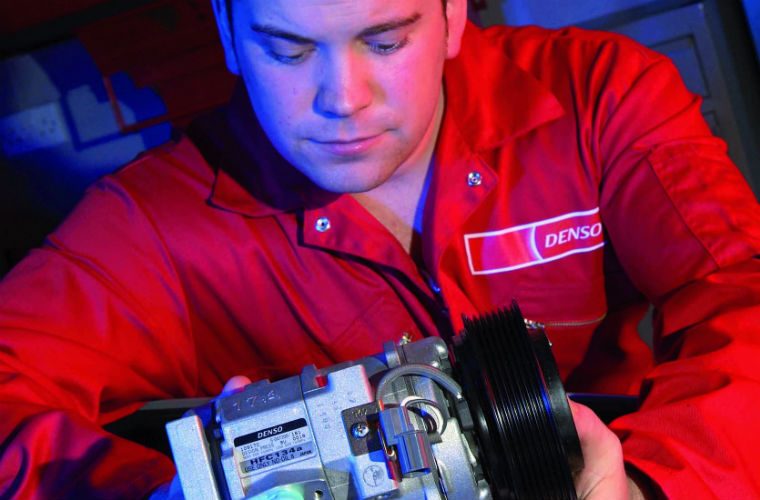With spring in motion, more and more drivers will be switching on their air-conditioning systems expecting a breath of fresh air.
However, after months of non-use, many will be greeted by the unpleasant surprise of a failed compressor which is often down to the wrong type of refrigerant being used.
A compressor is the main heat exchanger within the air conditioning system.
It condenses the refrigerant in the air conditioning cycle into a liquid by exchanging the heat from the high temperature and high pressure gaseous refrigerant to the cooler outside air.
When it comes to the compressor, using the correct type of refrigerant is crucial to the air-conditioning system functioning properly, and recent legislation changes have meant that even the most experienced technician can make a mistake if they’re not clued in.
To clear up many of these regular problems, DENSO outlines some of the most frequent compressor faults, and what their causes could be.
Separation of different substances
An obvious separation of different oil substances, one transparent and the other not, without variable displacement, system blockage or compressor seizure.
The cause of the failure will be the PA0 oil added to the refrigerant cycle.
PAG oil and PA0 oil do not mix and will result in the creation of paraffin like substance which could result in the clogging of the control valve and the refrigerant cycle.
Rubber seals swollen
No variable displacement and system leakage is often an indicator that the system has been filled with the wrong type of refrigerant.
It could also be due to the incorrect additives (conditioners) or flushing agents being used.
This could result in the refrigerant, oil, additive or flushing agent swelling the compressor rubber seals.
Separation of different liquids
Where symptoms include one liquid forming droplets on the other, excessive noise and compressor seizure, the cause of failure is usually down to the POE oil added to the refrigerant cycle.
PAG oil and POE oil do not mix properly which could result in a high percentage of POE will reduce lubrication performance.
Discharge port discoloured
Symptoms often include a hardened or a gel like substance inside the oil or suctions port, caused by no variable displacement, system blockage or compressor seizure.
Other causes may be leak stop additive or conditioner added to the refrigerant cycle, resulting in a chemical reaction of the leak stop or conditioner caused blockage of the compressor control valve and / or expansion valve.
Cracked/shattered plastic pulley
Indicators will include drive belt noise or the drive belt will be disengaged.
This is often caused by incorrect removal or installation of the drive belt or hitting the DL-pulley before or after installation.
It may also be the result of excessive force applied to the pulley resulting in cracks or shattering of the pulley.
Since 2017 every car manufactured will be using use the new refrigerant R1234yf in the air conditioning system, as the industry attempts to make the systems more environmentally friendly.
Each compressor will need a specific ND oil to prevent any failures, also depending on whether it’s using the new R1234yf refrigerant or R134a, so it is always worth checking the manufacturer’s instructions which details exactly what each compressor will need.
To help workshops, DENSO provides a wide range of air-conditioning compressors to workshops which are new, filled with the corresponding oil types and delivered as complete assemblies.
For further details of DENSO’s product range, click “more details” below.







